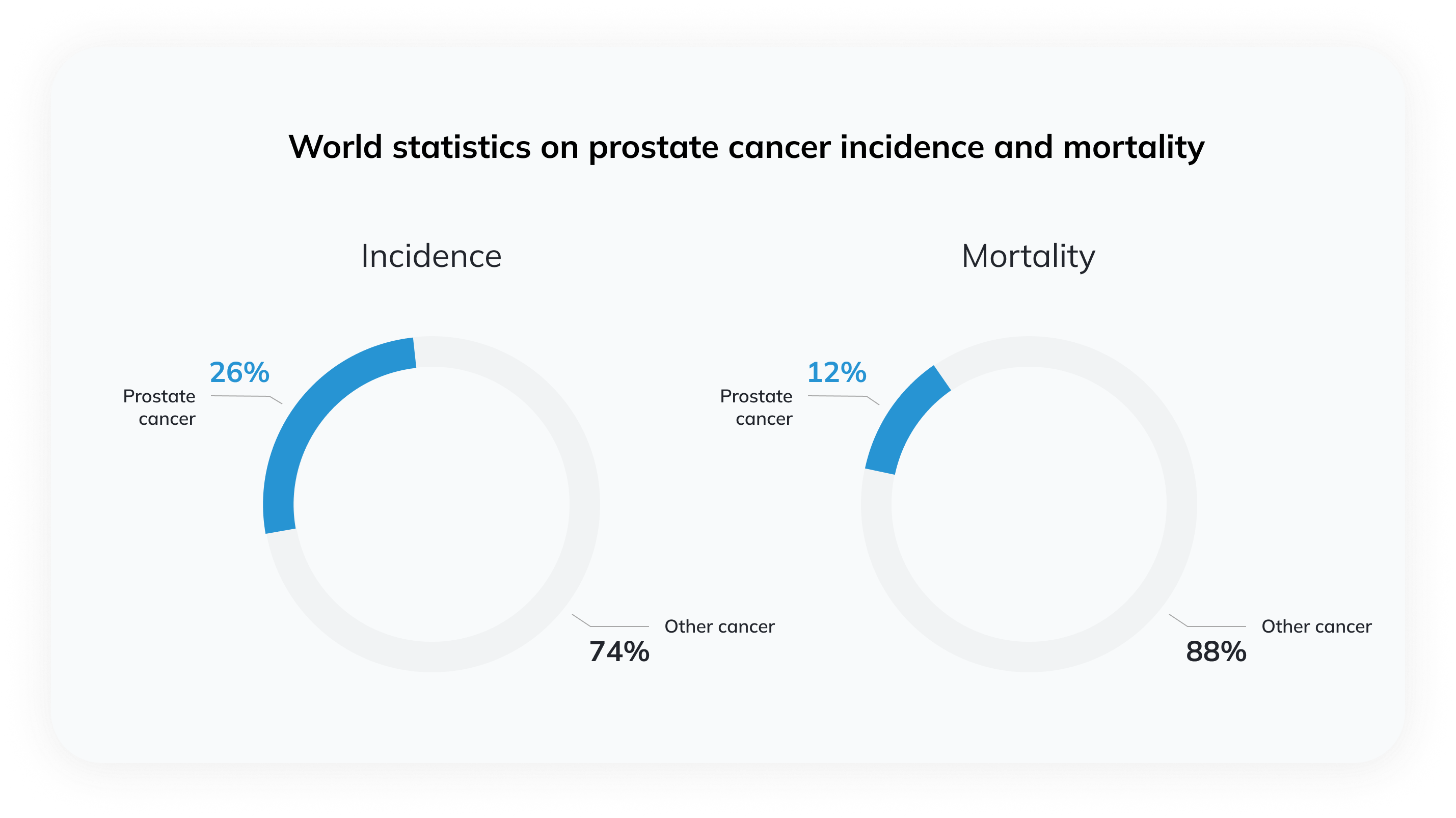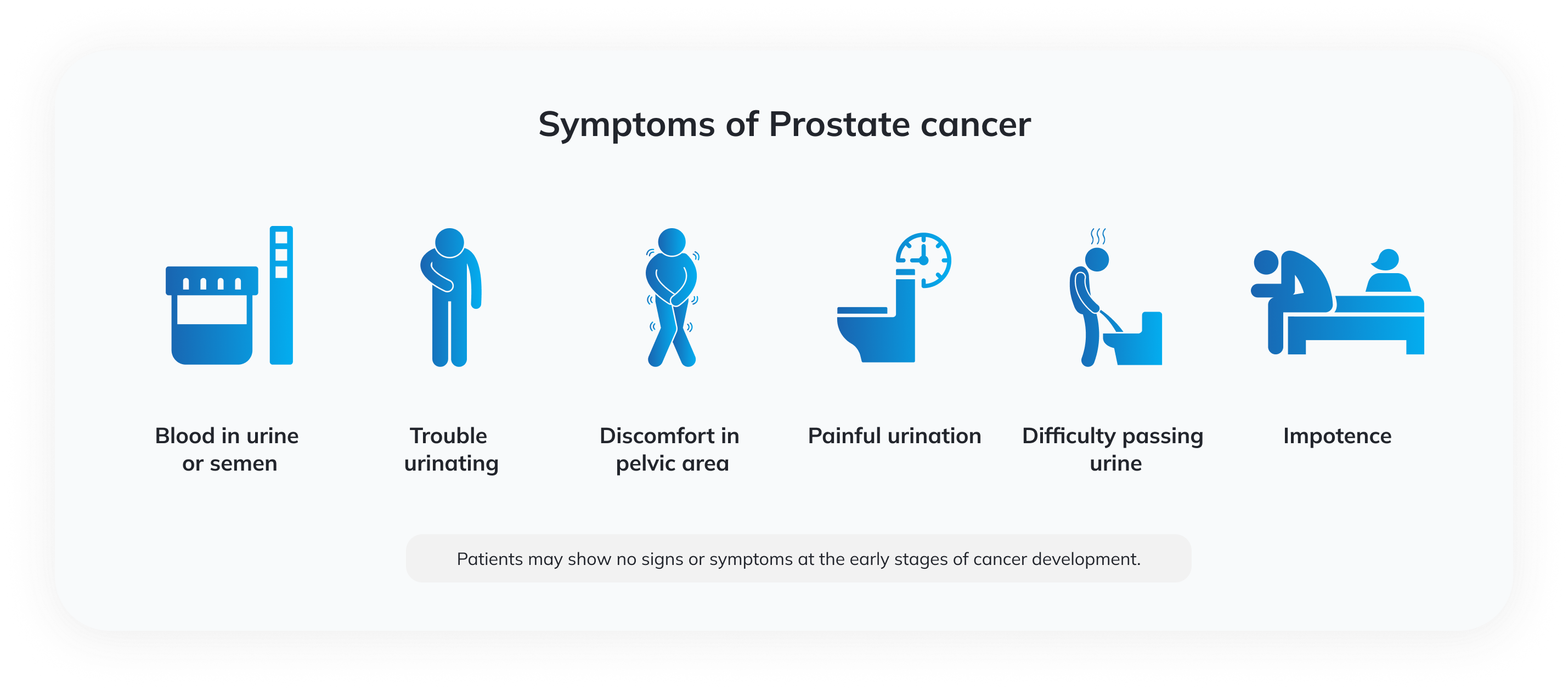Prostate cancer is usually diagnosed in older men. No symptoms of the disease are detected during its early stages. Symptoms appear only in the later stages when the treatment becomes more complicated. Much more problems arise when cancer spreads to other organs.
Therefore, all men, regardless of the absence of any signs of illness, are recommended to check their health periodically.

Lithuania statistics on prostate cancer incidence and mortality (data from GLOBOCAN database and Institute of Hygiene (HI), 2020)
Source https://www.hi.lt/uploads/pdf/leidiniai/Statistikos/Mirties_priezastys/Mirties_priezastys_2020.pdf
Symptoms of Prostate cancer
Prostate cancer usually develops slowly and does not cause any symptoms for a long time. The main symptoms of prostate cancer are unpleasant and painful frequent urination. Sometimes traces of blood are found in the urine. These symptoms do not necessarily mean cancer. These symptoms are also common in benign prostatic hyperplasia (enlarged prostate).

Symptoms of high grade (aggressive) cancer
When prostate cancer spreads to other organs, additional symptoms appear including pain in the back, pelvis, and hips. These symptoms indicate a late and hard-to-treat stage of the disease when metastases have formed in the bones.
Stages of prostate cancer
For successful treatment of prostate cancer and prevention of its further spread, it is vital to know if the cancer is clinically significant (aggressive) or not. Prostate cancer with a Gleason score of 7 or more in biopsy material is considered clinically significant.
The earlier the disease is detected, the easier it will be to cure. In the initial stages, cancer is non-aggressive and does not cause any symptoms. Such cancer does not usually need treatment, only monitoring. Later, when cancer reaches the stage of clinically significant cancer, treatment is necessary to prevent it from spreading and possible complications. A prostate biopsy is needed to confirm the diagnosis of aggressive prostate cancer.
Diagrams below show that the risk of dying within 10 years after diagnosis with prostate cancer depends on the stage of the disease (JAMA. 2005;293(17):2095-2101). Men aged 55-59 at the time of cancer diagnosis were included in the study. Biopsies with histology Gleason score of 7 or higher were considered clinically significant.
Ten-year mortality rate in patients diagnosed with different Gleason grades 6, %

 Working hours
Working hours 